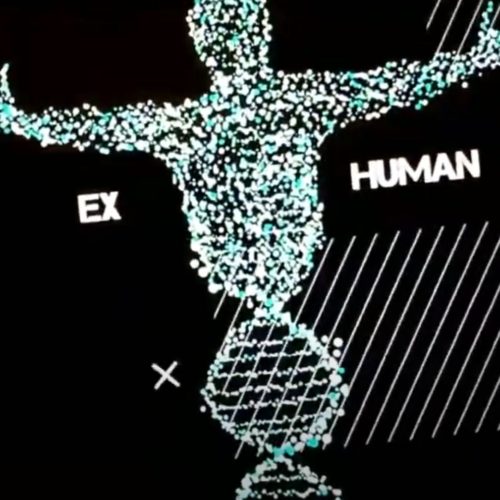On voluntary taxation or what could also be called “P2P taxation” or “emergent swarm taxation”
 If the state is an information structure, then the reason that it has been “computed” using representative government, is because that was a way to enforce rigid, static, computer-like processing. You can have a state without a monopoly on violence. The blockchain is exactly that.
If the state is an information structure, then the reason that it has been “computed” using representative government, is because that was a way to enforce rigid, static, computer-like processing. You can have a state without a monopoly on violence. The blockchain is exactly that.
In other words, with computers, there is a new medium for running code. Previously that was limited to the human brain, which is why the nation-state evolved. Nick Szabo who coined the word “smart contract” in Formalizing and Securing Relationships on a Public Network (1997) talks about the distinction between “wet code with traditional legal contracts that run in the heads of lawyers”, and dry code that runs in computers.
So nation-states use a static, rigid structure, where the government of the state is defined by a monopoly on violence, as a way of enforcing computer-like processing. This is a favorable condition for a culture which is often called “statism”, or “staticism”, a byproduct of limitations in the legal system. [1]
So, state as an information structure has been processed on human brains because computers did not exist, and then because of lag. Now, in the past decade, there has been a lot of development in using computers for consensus.
New consensus structures form an environment where forced taxation is rejected
“If we use technology to build an impenetrable network, how can we do tax enforcement” – Barack Obama, SXWX 2016
With new consensus structures, the limitations which were inherent to the previous system are gone. Just like forced marriage used to be the status quo, and then with universal suffrage and new consensus structures that then evolved into voluntary marriage, still called marriage, the vision of Bitnation is that the blockchain as a consensus system will make forced nationality obsolete, which will then be replaced with P2P nationality.
Forced taxation was a natural emergence when the nation-state was used as the consensus system, and with P2P nationality it will no longer be consented to, and so will be replaced with voluntary tax. [2]
P2P taxation would use distributed governance for tax-rates
P2P taxation, as a theoretical concept, could be useful for building, for example, decentralized basic income systems. Within a P2P taxation system based on voluntary agreements, there would be no clear boundaries in which to place a central enforcement system for tax-rates. Within such an environment, it may be possible for some form of P2P governance system, using peer-selection, to be used.
The Resilience protocol has proposed that transaction-pathways could be used to build a “web-of-consumption” that could have favorable conditions for P2P taxation using a peer-selection system.
The Resilience system uses what it calls “dividend pathway”, where every transaction made using its currency RES, potentially every single transaction in the world, forms a dividend pathway. These pathways, aggregated together [3], form a web, which is likened to how the world wide web is the web of information, or how the web 2.0 and the social web is the web of social connections.
The pathways grow in a chronological way, forming what the Resilience protocol calls “branching schemes”. [4] Branching schemes are a play on the word pyramid scheme, and conceived to be as a sort of “positive pyramid scheme” (Waters, 2016), where pyramid schemes could be seen as “decentralized wealth transfer systems”.
As the dividend pathways are used up as tax flows through them, branching schemes would be an ever-ongoing, fractal system that is based on whatever it is that makes people invest in pyramid schemes (since whatever that is it seems to work pretty well. )
Using smart contracts to build a currency with dividend pathways
Dividend pathways can be implemented in a smart contract on Ethereum with the ERC20 standard using just a few lines of code.
function transfer(address _to, uint256 _value) {
/* Calculate tax */
uint256 taxCollected = _value * taxRate / 1000;/* Verify Proof-of-Individuality */
bool isHuman = proofOfIndividuality.verifyPOI(msg.sender);/* Create the dividend pathway */
dividendPathways[_to].push(dividendPathway({
from: msg.sender,
amount: _value,
timeStamp: now,
isHuman: isHuman
}));/* Distribute the tax as credit to the swarm tree */
swarmRedistribution(_to, now, taxCollected);/* Add and subtract new balances */
balanceOf[msg.sender] -= _value;
balanceOf[_to] += _value – taxCollected;/* Notifiy anyone listening that this transfer took place */
Transfer(msg.sender, _to, _value);
}
The timeStamp makes the pathways branch out in chronological branching schemes.
When pushing the tax into the pathways as how blood flows through veins or capillaries, filter by timestamps at each intersection.
function iterateThroughSwarm(address _node, uint _timeStamp, uint _taxCollected) internal {
for (uint i = 0; i < dividendPathways[_node].length; i++) {uint timeStamp = dividendPathways[_node][i].timeStamp;
if (timeStamp <= _timeStamp) {address node = dividendPathways[_node][i].from;
if (
dividendPathways[_node][i].isHuman == true &&
inHumans[node] == false
) {
humans.push(node);
inHumans[node] = true;
}if (dividendPathways[_node][i].amount – _taxCollected > 0) {
dividendPathways[_node][i].amount -= _taxCollected;
} else removeDividendPathway(_node, i);iterateThroughSwarm(node, timeStamp, _taxCollected);
}
}
}
The pathways decay. This decay can be “tuned” by changing how much they decay as tax flow through the pathways.
if (dividendPathways[_node][i].amount – _taxCollected > 0) {
dividendPathways[_node][i].amount -= _taxCollected;
} else removeDividendPathway(_node, i);
Dividend pathways and a “web-of-growth” as an environment for distributed tax-rate governance
The dividend pathways, when aggregated over time, form a “web-of-consumption” or “web-of-transactions” or web-of-growth, that could then be used as a map of how to distribute credit in a P2P basic income system.
Since each person grows their own branching schemes, a peer-selection system for tax-rates could be placed within that environment, where each person has an incentive to select tax-rates which are beneficial to them.
When tax-rates are selected for in transaction-pathways, they could be conceptualized to exist as “Taxemes”, a play on the word “genes” or “memes”, and exist as parasites or viruses that spread through consumption, and extract tax.
Taxemes would be created when a transaction is made to an account that does not host any “secondary Taxemes” as in it is not infected with Taxemes from any other node. The accounts personal Taxeme would then produce a copy of itself, and spread this copy to the consumer.
The newly created Taxeme would spread through the network until it is taken out of circulation (potentially by a anti-body like system with “anti Taxemes” that spread in large numbers in the opposite direction, from consumer to producer rather than producer to consumer. )
contract Taxemes is RES {
struct Taxeme {
bytes32 taxemeID;
uint rate;
uint volume;
}Taxeme[] ListOfTaxemes;
mapping(address => ListOfTaxemes) Taxemes; // Sort Taxeme by first-in-first-out
mapping(address => uint) public PersonalTaxeme;
function setPersonalTaxeme(uint _value) public {
if(_value > 1000) throw; // in parts per thousand
PersonalTaxeme[msg.sender] = _value;
}
The transaction pathways, called dividend pathways, could be “closed” and only open for swarm redistribution after a Taxeme has been “paid forward”. This rewards each user to not only consume from companies in the network, but to also be employed by those who use the RES currency (and therefore forward Taxemes).
The tax-rate of a Taxeme could shape the width of the dividend pathway that is formed from the transaction, and spreading high tax-rate Taxemes would give a person dividend pathways that potentially convey more tax.
If the dividend pathways are similar to a vascular system and the veins in our bodies, but pumping credit instead of blood, then each Taxeme would behave like a pump, like heartbeats, each beat feeding tax back through the dividend pathway web.
Towards P2P taxation as a meme
Government – monopolies on violence – are made obsolete with crypto, since it’s not possible to exert violence on virtual states, you can’t tax Bitcoin for example. Virtual is a new medium with new rules. Wealth redistribution systems in the distributed autonomous virtual state (DAVS) paradigm, would use voluntary taxation.
Enforcement in virtual nations come in the form of markets. Those markets can be programmed with any sort of rules, as long as those rules are based on voluntary peer-to-peer agreements.
Taxemes as a concept are an example then of P2P enforcement and would form cultures of sharing the wealth, which uses the dividend pathway system to distribute it. [5]
References:
- https://steemit.com/blockchain/@johan-nygren/4-2-distributed-autonomous-virtual-states-davs-and-the-externalization-of-law
- https://www.scribd.com/document/334327349/Cryptosecession-and-the-Limitis-of-Taxation-Towards-a-Theory-of-Non-Territorial-Internal-Exit
- https://steemit.com/res-currency/@johan-nygren/branching-schemes-and-tapping-into-unharnesses-network-potential
- https://bitnation.co/blog/agent-based-model-abm-dividend-pathways-swarm-redistribution-decentralized-basic-income/
- https://steemit.com/res-currency/@johan-nygren/taxemes-or-how-to-achieve-decentralized-control-of-tax-rates
About the Author:
Johan Nygren explores the frontier of distributed governance and peer-to-peer technology, as well as translating the potential of the web 3.0 and packaging in a way that can resonate with a broader audience. He has invented the idea of “dividend pathways”, which link transactions together into a web, which is a bit similar to Tim Berners Lee’s idea from the 80s for the Hypertext Transfer Protocol (HTTP) that created the world wide web.
Related articles
- Vitalik Buterin on Singularity 1 on 1: Ethereum is a Decentralized Consensus Platform
- Andreas Antonopoulos on Singularity 1 on 1: “Bitcoin is not currency; it’s the internet of money!”
- Bitcoin: The Financial Singularity is Here
- Arthur Traviss Corry on Singularity 1 on 1: Give Bitcoin a Try!
- The Bitcoin Phenomenon [Short Doc]








